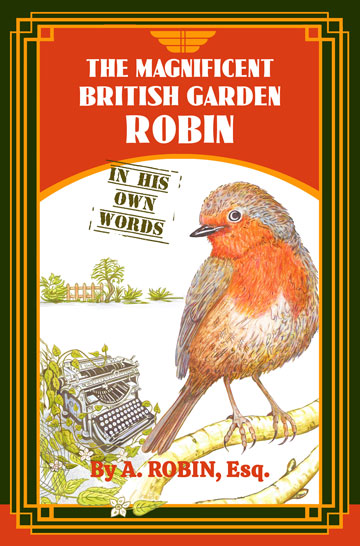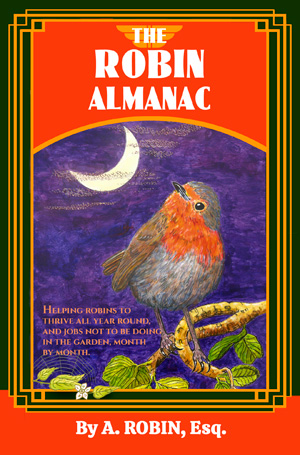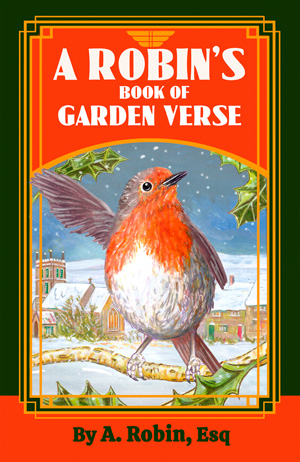Questions and answers - page one
Where do we live?
Redbreasts naturally have always lived in wooded areas and countryside. That's where, for most of our evolution, our food has been most likely to be found. But over the centuries of human habitation we have become quite fond of living close to people. We now populate your gardens and parks, and can even be found in big cities. There is hardly a part of the UK where you will not be able to spot at least one of us.
How long do we live for?
Though sources differ as to the exact figure, our average life expectancy is sadly rather low – less than two years, in fact. This dismal statistic (from a robin’s perspective at any rate) is due to the high number of birds who perish during the first few months of life when they are at their most vulnerable. Thereafter, a redbreast can live on to a ripe old age of at least eight years. There is even a recorded instance of one reaching 11 years of age.
How and when do we mate?
Like most species of birds, we do not have any obvious external genitalia. Instead, both sexes have an orrifice and hollow organ called a cloaca which leads to the internal organs of reproduction, male or female. Mating takes place when the two cloacae come in contact and the male semen is then transferred to the female. The cloaca also serves as an exit channel for urine and faecal matter. So quite a versatile organ.
How do we keep dry?
Being outdoors in all weathers is no problem for us. An extensive layer of feathers covers our bodies. These are coated in an oily substance that we apply with our beaks during the process of ‘preening’ or maintaining our feathers. The result is a perfect waterproof coating. So, even if it rains heavily, the water droplets will simply run off our bodies. The oil itself is obtained from a special gland at the base of our tails.
How do we stay warm in winter?
Our feathers provide excellent insulation. A clever bird like me will also fluff up its feathers in the cold weather to trap air between the individual feathers, which helps keep the body warm, too. A bit like the duvet on your bed. During a very cold night, and having perched safely, we will alternatively raise one leg for a while to conserve warmth, and might also sleep with our faces tucked into our feathers.
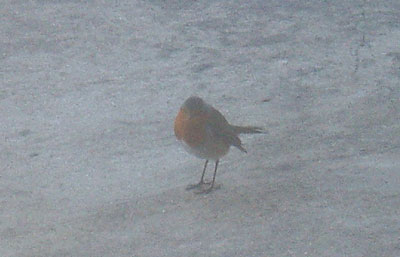
Where do we go to for sleeping?
Redbreasts sleep in trees or bushes, and occasionally might even venture into an old unused building like a garden shed. We are also quite happy sleeping within prickly bushes or thickets because these usually provide more protection from predators. A good garden setting for birds like us would therefore always include hedges, shrubs and bushes.
Why are UK robins so tame?
Robins are famous for their friendliness towards people, especially if you have some nice dainty morsels for us to eat. This is because in the olden days we used to follow animals around, knowing there would be rich pickings after they had snouted around and dug for their own food. Commensual feeding, as it is more properly termed. So being 'tame' is an instinctive response.
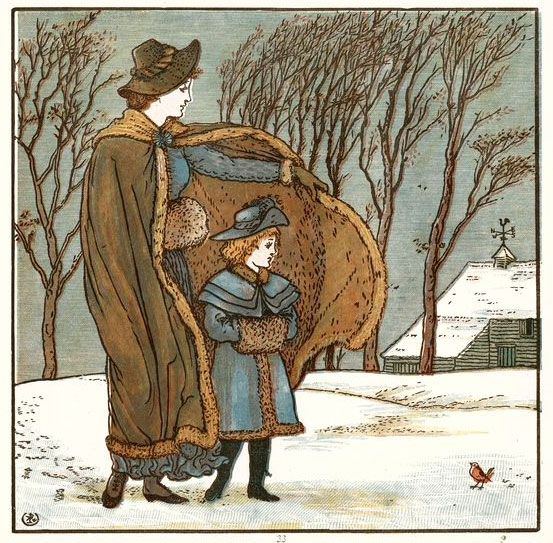
'North Wind and Robin' by Victorian artist and illustrator Walter Crane
What do robins die of?
Most redbreasts die from predation – that is from other creatures that see us as a handy meal. These include other birds like sparrowhawks or buzzards, or animals such as foxes or cats. One of our biggest problems is creatures eating our eggs. Magpies or jackdaws, crows snakes, squirils, badgers and rodents can all raid our nests in the spring. Other than that we do sometimes accidentally fly headlong into windows; manage to drown ourselves in ponds, or get run over by cars.
Where can I learn more about Britain's favourite bird?
Discover more about the British garden robin in this exciting new book. Authored by A.Robin, Esq and illustrated by Robert Stephen Parry, it's available as a beautiful 230-page paperback; as a sturdy hardcover and as an eBook for your Kindle or Apple device. All the topics mentioned on this website, and many more, are covered inside in all their scandalous and outrageous detail. With over 30 original illustrations.


